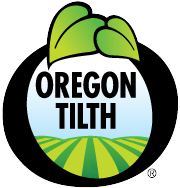OVERVIEW
Farmers need biodiversity. The relationships between insects, plants and humans are so interconnected that sometimes we lose sight of their importance. We’re just beginning to fully understand how destructive agricultural practices and a changing climate are negatively impacting biodiversity and our farmlands. One thing is clear: We’ll need the security of healthy, diverse ecosystems in order to meet these and other challenges head on.
The Challenge
Biodiversity is an integral part of agriculture. From plant varieties to “ecosystem services” like pollination from native bees, we simply can’t continue to produce food without it. With our landscapes facing more severe weather and habitat degradation from development, we’re seeing farmers scrambling to adjust quickly to continue to produce quality foods.
Unfortunately, many farming methods weaken biodiversity with damaging and risky practices. In the 1970’s, the United States lost more than $2 billion dollars in corn crops from a fungal disease outbreak due to unusually warm and wetter weather. The National Academy of Sciences released a study that showed how monocultures are highly vulnerable to disease, putting crops and economy in jeopardy.
Despite countless warnings, biodiversity is still undervalued and is threatened. Over two-thirds of our crops rely on wild pollinators such as bumblebees and butterflies. But use of non-discriminating chemicals can kill off these valued agricultural partners, placing farms and wild habitats at great risk. Loss of habitat and the rich abundance of native species is an environmental and economic cost we simply can’t afford.
The Opportunity
Certified organic agriculture identifies biodiversity as central to sustainable, long-term productivity. And in a climate where weather and its impacts are increasingly unpredictable, Oregon Tilth believes biodiversity offers a blueprint to strengthen agriculture’s resilience when and where it’s needed most.
Organic standards protect and conserve landscapes, on the farm and nearby. And support for long-term solutions to protect genetic diversity through seeds and crop breeds can only increase our ability to be flexible in the face of new challenges. Preservation of habitat for beneficial wildlife in the form of hedgerows and grasslands support natural pest controls. In short, organic agriculture is designed to promote strong ecosystems on and off the farm, preserving the countless environmental services it depends upon to be successful.
No where is this more clear than in integrated use of crop rotations and cover crops. A staple practice for any organic farm operation, studies show that alternating land use in addition to planting cover crops gives soil much needed diversification over time. It decreases erosion, adds organic matter and introduces valuable nutrients for plant growth. But it also ensures a diverse population of microorganisms, keeping the land healthy for years to come.
And while organic farmland grew by more than 150 percent over the last decade, we need to do a lot more to protect the natural resources and services we can’t live or farm without.
